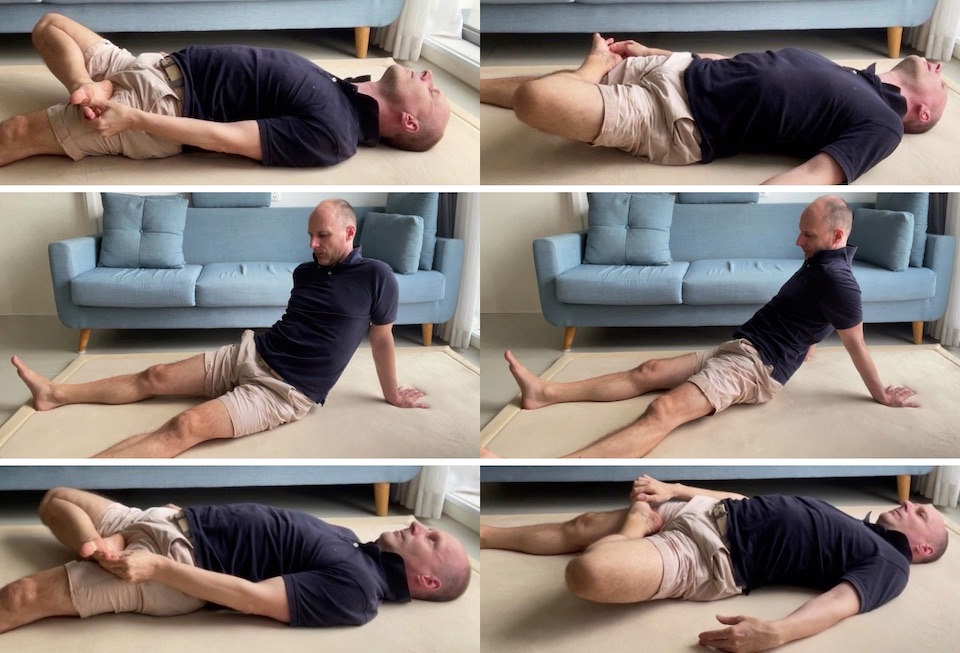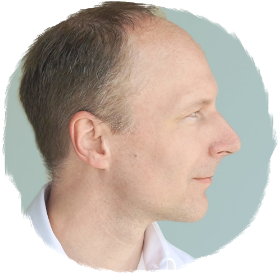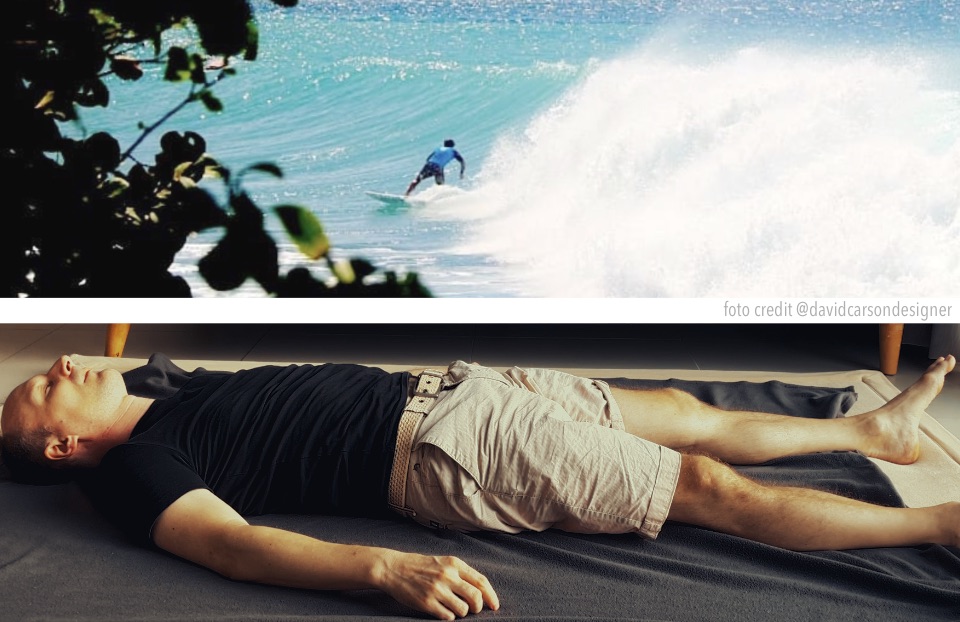„Karl Popper says, a law of Nature is not prescriptive but descriptive.” – Hans Selye
When Bert Hellinger first introduced his Family Constellation sessions in Germany, he created quite a big buzz in the by-then already well established order of therapists. If you’ve ever watched a Family Constellation therapy session yourself, you couldn’t help but ask: What am I looking at here? What is happening? How is this even possible? And you probably couldn’t help but shed some tears yourself, and stand in awe for the soothing revelations, mystery, and truth. Finally the order that is healing became visible, literally so.
Bert Hellinger’s work is phenomenological. Instead of a „find a problem fix a problem” approach, he sets up conditions in which we can observe movements and tendencies within families (what he later called Movements Of The Soul) and let them return to their natural order. And from decades of observations, students finally distilled a couple of principles they could usher into manuals and textbooks—which made Family Constellations better accessible, but also more scholarly.
For example: Hellinger™’s first basic principle of life goes like this: „All who belong to a family have the same right to belong.” Which also means that as soon as a member of a family is denied or refused this belonging (by whom?), disorder arises with far-reaching consequences in terms of health, fortune, and life path.
The second basic principle of life is called the order of precedence. It demands that, „Everyone in the family take their rightful place, which is theirs alone.” This order of precedence is a hierarchical order: in the family there are some who come first and others who come after them. The order of precedence is determined by the time of belonging. Thus, the parents come before their children, the first-born child before the second, and so on. „If a person who joined later elevates themselves above someone who was there before them, they violate this order of precedence.” Quotes from hellinger.com
In his seminars Bert Hellinger used to tell stories—concise, beautiful and touching. I myself participated in a Family Constellation seminar (two decades ago), and also watched many such sessions. Furthermore, I bought a couple of his books and fell in love with his stories and way of openness.
Now, this all makes quite a bit of sense in the world of family and therapy. But I can’t help asking:
But does it?
Despite my questioning, there’s a couple of undeniable underpinnings, for example, time provides us with an order: the order of precedence.
My grandparents joined my family before my parents did. I joined next, as my parent’s first son. My brother was born second and therefore joined after me, and third my sister came after him. My sister passed away when she was three years old. Yet, in the ranking and order of things, she keeps her place. This order of precedence is easy to grasp, easy to observe, and easy to follow.
But is it?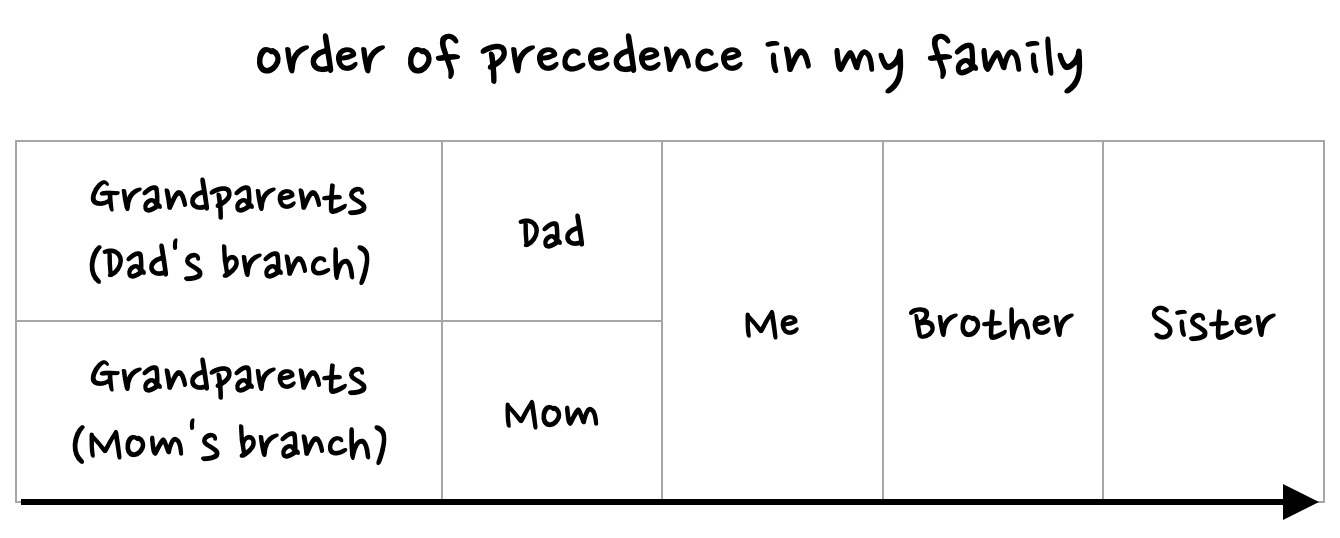
Neither my brother nor I have children. My parents divorced, my mother stayed single, my father re-married immediately. His new wife has a grown-up daughter, and a son who passed away many years ago during her previous marriage. That’s as much as you would need to know to start a session. The plethora of real world problems (financial and personal quarrels, perceived injustices, inheritances, apartments and possessions, addictions, illnesses and deaths, etc.) all are said to arise from the orders of life and its violations, and become visible in such a Family Constellation.
To conclude:
- According to Hellinger™, in every family there is an order of precedence.
- The way to violate that order is through behaviour—if a family member behaves in a way that defies that order of precedence.
- There’s quite a few more phenomenological observations (which were then identified as incidents, principles and ways to violate those principles)
So, to conclude, my question is this: can any of this be adapted or applied to the physical body and movement learning? Does the physical body, too, have such an order of precedence? Could physical health (and growing ability) be as simple as finding and restoring such order?
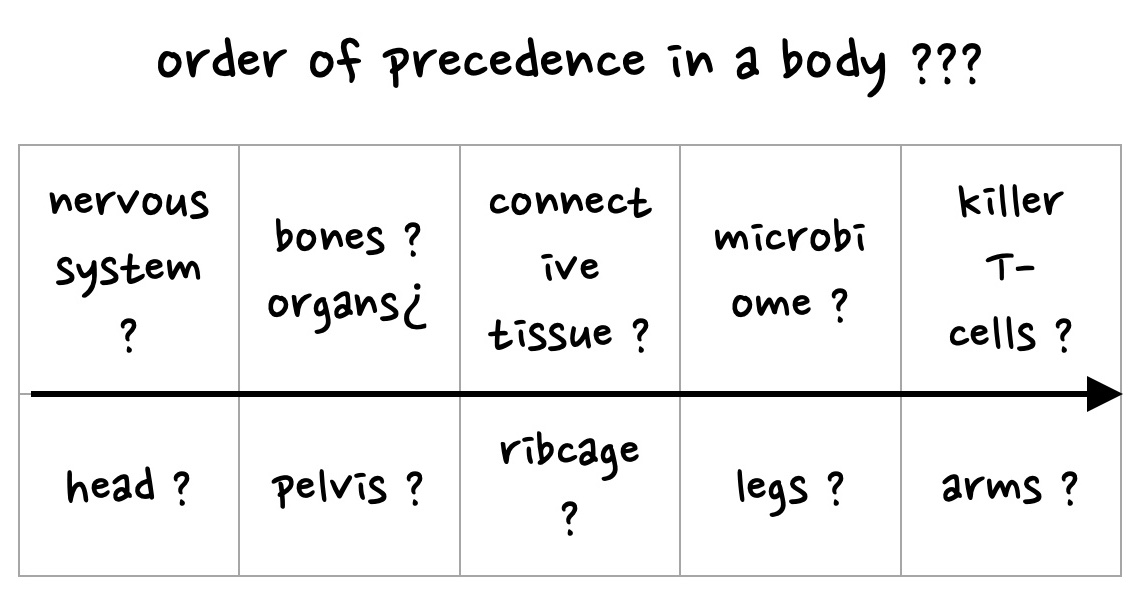
Can we prioritise one body part over the other by the point in time the parts came into being, as we grew from a two-cell’er into a full grown human?
It seems like as if the mighty greek titan Cronus, the god of time, did not give the human body an equally easy to observe order of precedence as he gave to families.
In order to make sense, and to find order in chaos, Andrew Biel wrote in his famous and industry defining anatomy book, „Trail Guide To The Body”:
„Wherever possible, a region’s bony landmarks have been strung together to form a trail. These trails are designed to help you understand the connections between structures. Without a path to follow, you, the traveler, would be lost in a jungle of flesh and bones with no idea of your trail’s location.”
Anatomy emperor Thomas W. Myers took this idea even further. In his landmark book „Anatomy Trains” he wrote:
„The absolute dominance of the isolated muscle presentation as the first and last word in muscular anatomy leaves the current generation of therapists unlikely to think in any other way. This form of seeing and defining muscles, however, is simply an artifact of our method of dissection – with a knife in hand, the individual muscles are easy to separate from surrounding fascial planes. This does not mean, however, that this is how the body is biologically assembled. One may question whether a muscle is even a useful division to the body’s own kinesiology.”
But, is it enough to identify parts and string them together? String them together by what means? Weight, density, function, the amount of force it can produce? By some sort of internal value system maybe? What is the body’s order? And what does violate that order?
This was a long post in order to arrive at these questions. And maybe one last question: does any of this matter?
